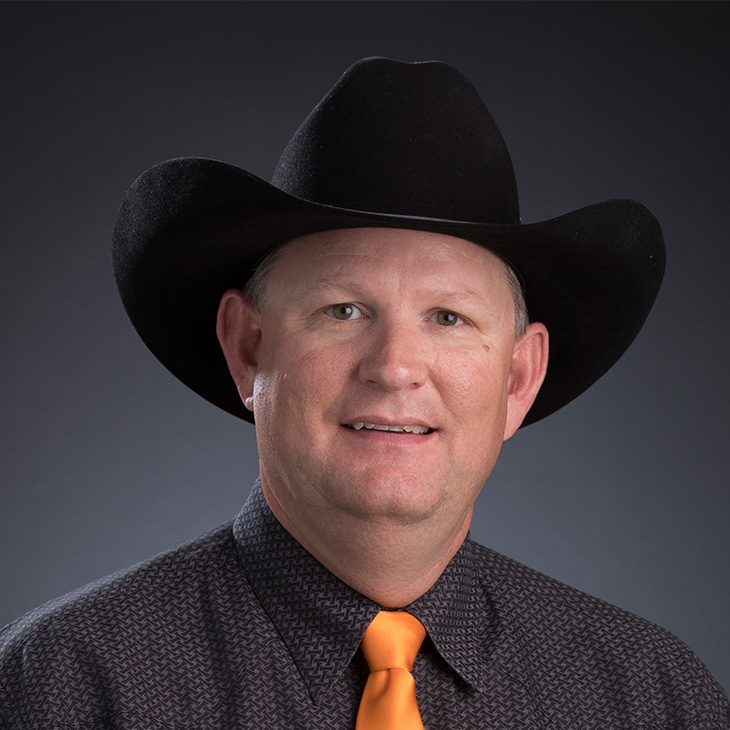
Vet Med Faces of Research: Dr. Mike Schoonover
Tuesday, November 3, 2020
According to Dr. Mike Schoonover, horses spend the majority of their lives trying to hurt themselves. Schoonover, an associate professor of equine surgery and sports medicine at Oklahoma State University’s College of Veterinary Medicine, has seen this first hand in the horses he has treated throughout his veterinary career. In this month’s Vet Med Faces of Research segment, Schoonover talks about his research to find better ways to treat wounds and infections.
“Currently most of my research involves regional limb profusion, which is administering a medication at a specific area in the body,” said Schoonover. “Many medications at really high doses can be toxic so if we administer them at a low dose and concentrate them in one area of the body, they can be effective and safe.
“The process of regional limb profusion is fairly simple but there are many variables involved. My research looks at all the different variables. When we are able to identify something and make a change that actually leads to practitioners adopting that change and using it in every day practice, that’s what gets us excited and drives us on to do more research.”
Schoonover likes the different aspects of research.
“One day I will administer regional limb profusions and collect samples from those horses. Another day I might organize the data from the samples into a spreadsheet and then another day I might actually write a manuscript to report that research. I do many different things so it’s not always the same thing.”
Schoonover says that regional limb profusion is a very valuable technique even with the number of variables involved.
“If we don’t do research to identify which of those different techniques are best, then we’re just shooting in the dark. Being able to investigate and pinpoint specific techniques that are better and being able to show that through scientific research is very important.
“If we can do a project, take that data and report it to the veterinary community and change the way practitioners do regional limb profusion so it helps more horses benefit from that procedure, that’s pretty exciting. Regional limb profusion is a very important part of general practice because horses have a tendency to injure themselves. These wounds and infections can be very difficult to treat and regional limb profusion helps us localize treatment. The more research we do on it, the better we’re going to become at performing it and the more likely we are to have success.”
Schoonover earned his DVM degree from OSU in 2000. Following his residency training, he was in private practice for about eight years. Since returning to Oklahoma State as a faculty member in 2012, he has continuously conducted research.
Vet Med Faces of Research is a monthly series designed to inform the public about the impact of the numerous studies being conducted at Oklahoma State University’s College of Veterinary Medicine. Advancing knowledge and understanding for the benefit of the lives and livelihoods of the people of Oklahoma is a critical element of OSU’s land-grant mission.
If you would like to support research at the OSU College of Veterinary Medicine, please contact Ashley Hesser, assistant director of development with the OSU Foundation, at ahesser@osugiving.com or (405) 385-0715.
